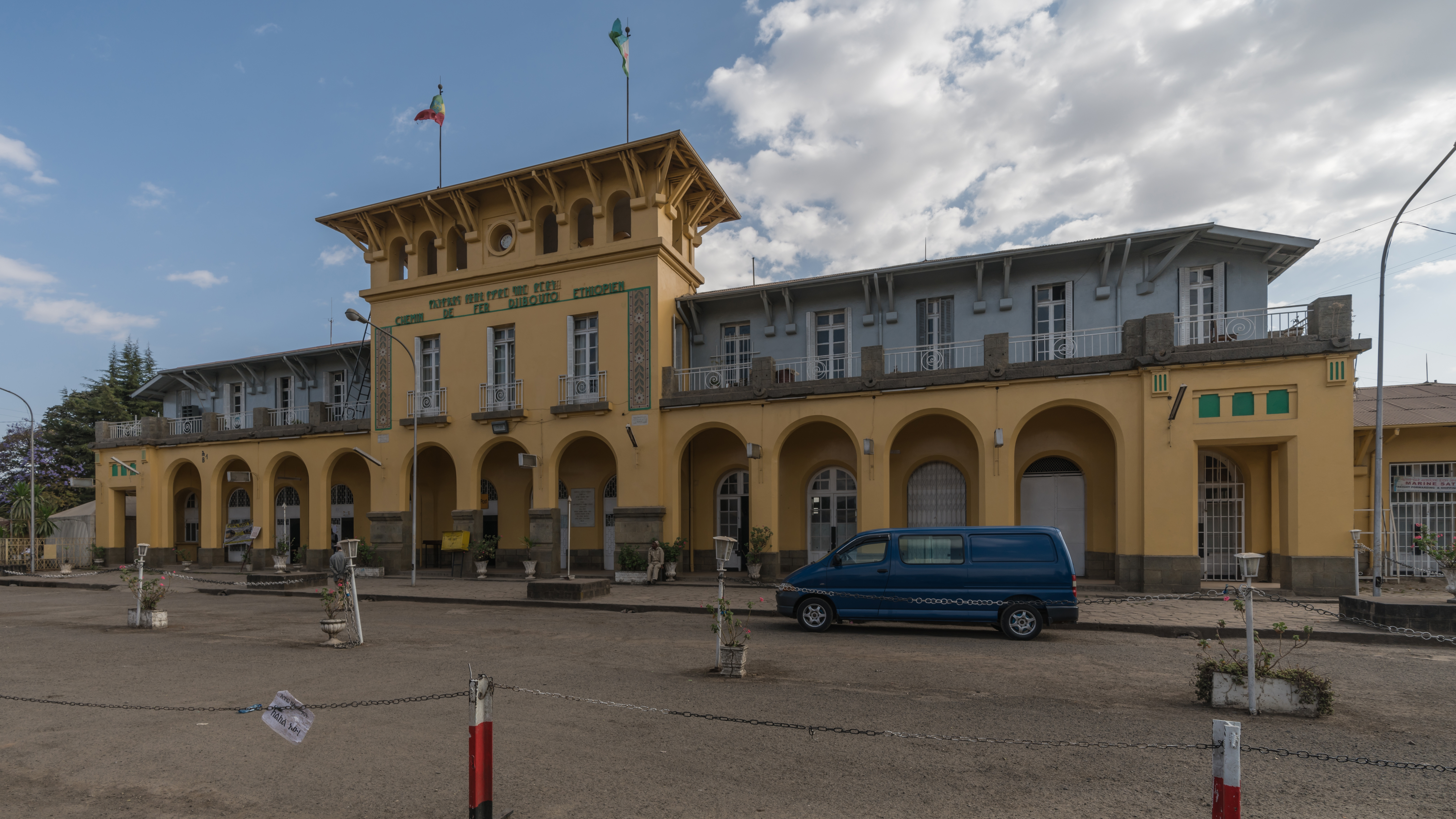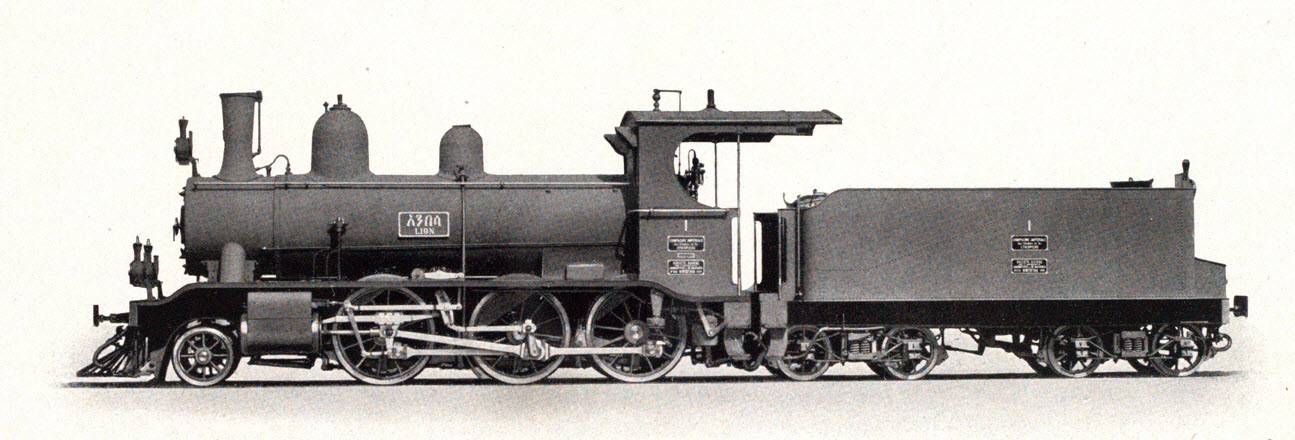|
Legehar Train Station
Legehare train station (french: La Gare) was the main railway station in Addis Ababa, Ethiopia, the terminal station of the metre-gauge Ethio-Djibouti Railway that connected Ethiopia's capital to the Port of Djibouti. Completed in 1917, the station was a central part of the city and the main source of traffic into the city. The style of the station is French, reflecting the nationality of its builders. The station is no longer in operation, as the metre-gauge railway has been largely superseded by the standard-gauge Addis Ababa–Djibouti Railway The Addis Ababa–Djibouti Railway (; , , ) is a new standard gauge international railway that serves as the backbone of the new Ethiopian National Railway Network. The railway was inaugurated by Prime Minister Hailemariam Desalegn on January ... completed in 2017. The standard-gauge station is located in the outskirts of Addis Ababa. References Buildings and structures in Addis Ababa Defunct railway stations Railw ... [...More Info...] [...Related Items...] OR: [Wikipedia] [Google] [Baidu] |
Addis Ababa
Addis Ababa (; am, አዲስ አበባ, , new flower ; also known as , lit. "natural spring" in Oromo), is the capital and largest city of Ethiopia. It is also served as major administrative center of the Oromia Region. In the 2007 census, the city's population was estimated to be 2,739,551 inhabitants. Addis Ababa is a highly developed and important cultural, artistic, financial and administrative centre of Ethiopia. Addis Ababa was portrayed in the 15th century as a fortified location called "Barara" that housed the emperors of Ethiopia at the time. Prior to Emperor Dawit II, Barara was completely destroyed during the Ethiopian–Adal War and Oromo expansions. The founding history of Addis Ababa dates back in late 19th-century by Menelik II, Negus of Shewa, in 1886 after finding Mount Entoto unpleasant two years prior. At the time, the city was a resort town; its large mineral spring abundance attracted nobilities of the empire, led them to establish permanent settlement ... [...More Info...] [...Related Items...] OR: [Wikipedia] [Google] [Baidu] |
Ethio-Djibouti Railway
The Ethio-Djibouti Railway (french: Chemin de Fer Djibouto-Éthiopien, C.D.E.; ) is a metre gauge railway in the Horn of Africa that once connected Addis Ababa to the port city of Djibouti. The operating company was also known as the Ethio-Djibouti Railways. The railway was built in 1894–1917 to connect the Ethiopian capital city to French Somaliland. During early operations, it provided landlocked Ethiopia with its only access to the sea. After World War II, the railway progressively fell into a state of disrepair due to competition from road transport. The railway has been mostly superseded by the Addis Ababa–Djibouti Railway, an electrified standard gauge railway that was completed in 2017. The metre gauge railway has been abandoned in central Ethiopia and Djibouti. However, a rehabilitated section is still in operation near the Ethiopia-Djibouti border. As of February 2018, a combined passenger and freight service runs two times a week between the Ethiopian city of Dire ... [...More Info...] [...Related Items...] OR: [Wikipedia] [Google] [Baidu] |
Port Of Djibouti
The Port of Djibouti is a port in Djibouti, the capital of Djibouti. It is strategically located at the crossroads of one of the busiest shipping routes in the world, linking Europe, the Far East, the Horn of Africa and the Persian Gulf. The port serves as a key refueling and transshipment center, and is the principal maritime outlet for imports to and exports from neighboring Ethiopia. An estimated 2,500 ships pass through and call through the port every day. The economy of Djibouti relies heavily on the strategic location of its port since about a third of all daily shipping in the world passes the north-east edge of Africa. The port has been at the center of a legal dispute between port operator DP World and the government of Djibouti since 2018, when DP World's port concession was revoked by presidential decree. Operations The Djibouti Ports & Free Zones Authority (DPFZA) is the governmental body administering the Port of Djibouti and other ports in the country. The org ... [...More Info...] [...Related Items...] OR: [Wikipedia] [Google] [Baidu] |
Addis Ababa–Djibouti Railway
The Addis Ababa–Djibouti Railway (; , , ) is a new standard gauge international railway that serves as the backbone of the new Ethiopian National Railway Network. The railway was inaugurated by Prime Minister Hailemariam Desalegn on January 1, 2018. It provides landlocked Ethiopia with access to the sea, linking Ethiopia's capital of Addis Ababa with Djibouti and its Port of Doraleh. More than 95% of Ethiopia's trade passes through Djibouti, accounting for 70% of the activity at the Port of Djibouti. The total railway capacity is 24.9 million tonnes of freight annually, with 6 million tonnes annually expected in 2023. These plans are accompanied by construction works at the Port of Doraleh to expand the annual cargo handling capacity from 6 to 14 million tonnes, with the aim of reaching 10 million tonnes of cargo by 2022. In 2019 the railway transported 84 073 passengers and generated US$1.2 million in revenue from that service, less than in 2018. In 2019 the railway generat ... [...More Info...] [...Related Items...] OR: [Wikipedia] [Google] [Baidu] |
Buildings And Structures In Addis Ababa
A building, or edifice, is an enclosed structure with a roof and walls standing more or less permanently in one place, such as a house or factory (although there's also portable buildings). Buildings come in a variety of sizes, shapes, and functions, and have been adapted throughout history for a wide number of factors, from building materials available, to weather conditions, land prices, ground conditions, specific uses, prestige, and aesthetic reasons. To better understand the term ''building'' compare the list of nonbuilding structures. Buildings serve several societal needs – primarily as shelter from weather, security, living space, privacy, to store belongings, and to comfortably live and work. A building as a shelter represents a physical division of the human habitat (a place of comfort and safety) and the ''outside'' (a place that at times may be harsh and harmful). Ever since the first cave paintings, buildings have also become objects or canvasses of much artistic ... [...More Info...] [...Related Items...] OR: [Wikipedia] [Google] [Baidu] |
Defunct Railway Stations
{{Disambiguation ...
Defunct (no longer in use or active) may refer to: * ''Defunct'' (video game), 2014 * Zombie process or defunct process, in Unix-like operating systems See also * * :Former entities * End-of-life product * Obsolescence Obsolescence is the state of being which occurs when an object, service, or practice is no longer maintained or required even though it may still be in good working order. It usually happens when something that is more efficient or less risky r ... [...More Info...] [...Related Items...] OR: [Wikipedia] [Google] [Baidu] |
Railway Stations In Ethiopia
Current railway stations in Ethiopia are served by standard gauge railways of the National Railway Network of Ethiopia which is mostly under construction, except the Addis Ababa–Djibouti Railway. Other stations were built for the in 2018 still operating metre gauge Ethio-Djibouti Railways, although this railway has officially been superseded by the new ''Addis Ababa-Djibouti Railway''. The following list contains dedicated railway stations with at least a single platform for passengers to enter or to leave trains. Train stops on open stretches without platform can outnumber train stops in railway stations by a 2:1 margin, but the former are not included in the lists. The railways usually also have a number of freight yards and dry ports for freight handling, but these are not counted as well. Standard gauge railways Description of railway stations Railway stations mostly have a single platform for passengers to enter or to leave trains. These platforms allow access witho ... [...More Info...] [...Related Items...] OR: [Wikipedia] [Google] [Baidu] |
Railway Stations Opened In 1917
Rail transport (also known as train transport) is a means of transport that transfers passengers and goods on wheeled vehicles running on rails, which are incorporated in tracks. In contrast to road transport, where the vehicles run on a prepared flat surface, rail vehicles (rolling stock) are directionally guided by the tracks on which they run. Tracks usually consist of steel rails, installed on sleepers (ties) set in ballast, on which the rolling stock, usually fitted with metal wheels, moves. Other variations are also possible, such as "slab track", in which the rails are fastened to a concrete foundation resting on a prepared subsurface. Rolling stock in a rail transport system generally encounters lower frictional resistance than rubber-tyred road vehicles, so passenger and freight cars (carriages and wagons) can be coupled into longer trains. The operation is carried out by a railway company, providing transport between train stations or freight customer faciliti ... [...More Info...] [...Related Items...] OR: [Wikipedia] [Google] [Baidu] |






